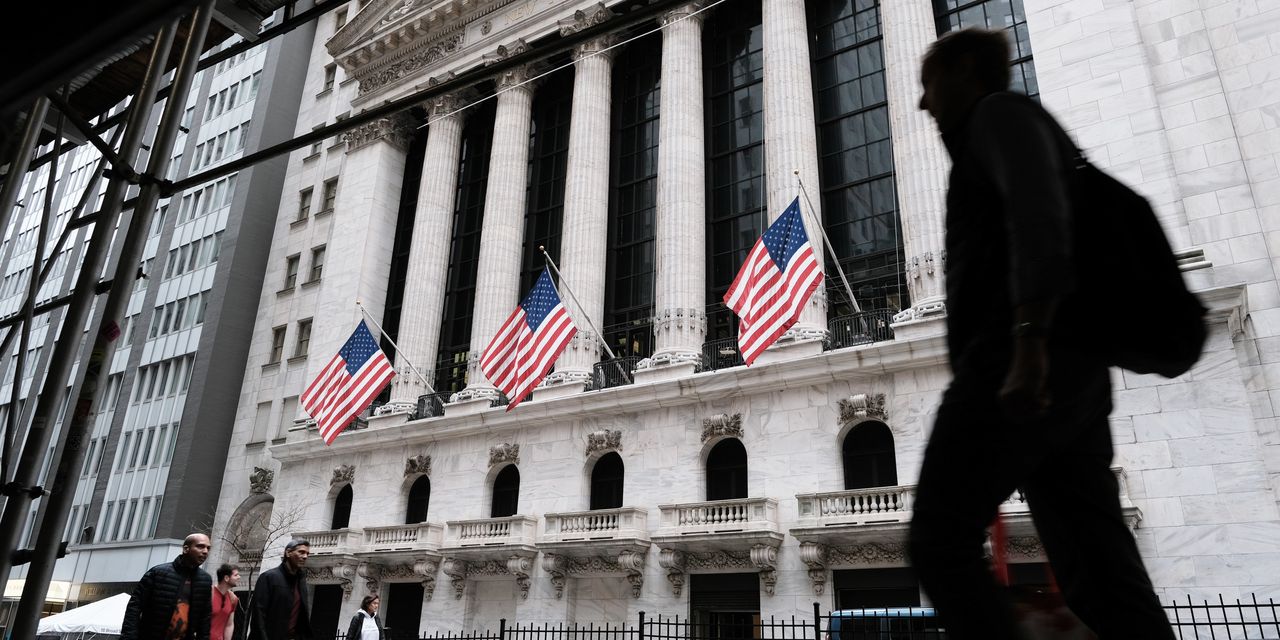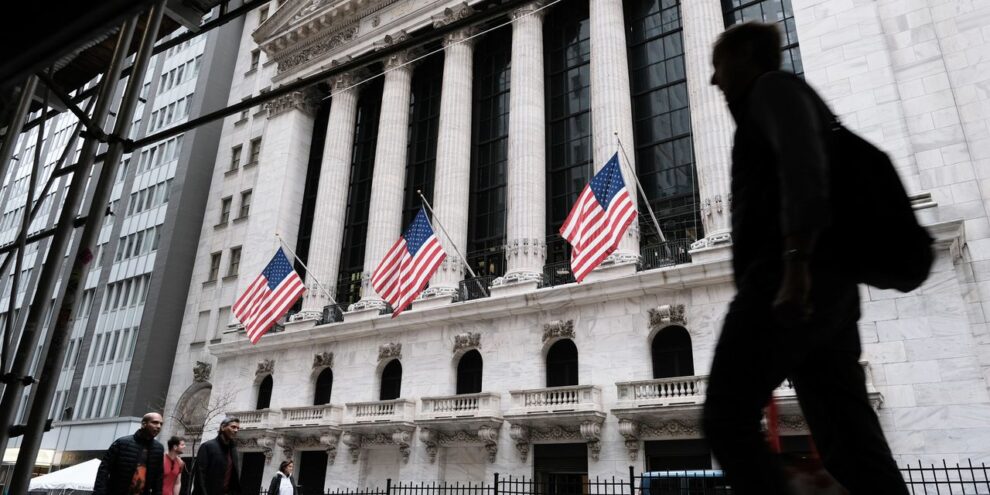
U.S. stocks ended mostly lower on Tuesday, with the Dow Jones Industrial Average snapping a four-day win streak after Goldman Sachs reported poor earnings results. The S&P 500 also ended lower, but the Nasdaq Composite eked out a gain as investors focused on whether the early 2023 rally has legs.
How stocks traded
- The S&P 500 SPX, -0.20% shed 8.12 points, or 0.2%, to end at 3,990.97
- The Dow Jones Industrial Average DJIA, -1.14% fell 391.76 points, or 1.1%, to finish at 33,910.85
- The Nasdaq Composite COMP, +0.14% gained 15.96 points, or 0.1%, ending at 11,095.11
Major indexes on Friday logged their second consecutive weekly gain. Investors on Tuesday returned from a three-day holiday weekend after U.S. markers were closed Monday for the Martin Luther King Jr. Day holiday.
What drove markets
Investor focus turned away from macroeconomic drivers like perceptions of the Federal Reserve’s monetary policy trajectory and toward the fourth-quarter earnings reporting season.
Results from Morgan Stanley MS, +5.91% beat analyst expectations, while those from Goldman Sachs GS, -6.44% disappointed. Shares of Goldman Sachs fell after the investment bank reported sharply lower fourth-quarter earnings that missed analyst expectations, after a blockbuster year-ago period. Shares finished 6.4% lower on Tuesday. Morgan Stanleyundefined
These follow Friday’s reports from many of the big banks, including JPMorgan Chase & Co. JPM, -1.55%, Bank of America BAC, -2.02%, Citigroup C, +0.78% and Wells Fargo WFC, -0.23% on Friday.
See: Goldman Sachs misses its earnings estimate, while Morgan Stanley beats as profits drop
The fourth quarter earnings season is a story of spotting the winners and losers — not only the individual companies, but also the economy’s sectors, said Kimberly Forrest, founder and chief investment officer at Bokeh Capital Partners.
It’s too soon to try gleaning much from the initial wave of results, Forrest said. “We haven’t gotten a clear direction yet in your handful of earnings. But it’s skewing to there being more meets and beats than there are misses. I think that shows us companies are able to mange expectations,” she said.
Overall, S&P 500 index company aggregate earnings are forecast to fall 2.3% in the fourth quarter, compared with a 1.6% decline at the start of the year, according to S&P Global Market Intelligence.
“Fourth quarter earnings season is under way and probably won’t bring much good news,” said Jeffrey Buchbinder, LPL Financial’s chief equity strategist. “Lackluster global growth, ongoing profit margin pressures from inflation, and negative currency impacts are likely to translate into a year-over-year decline in S&P 500 index earnings for the quarter. As always, guidance matters more as market participants look forward. The key question coming into this earnings season is whether the pessimism surrounding 2023 earnings has gone too far.”
See: Stock-market rally looks ‘unsustainable’ as S&P 500 enters ‘new, lower valuation regime,’ warns Citi
U.S.-listed shares of Chinese companies also declined on Tuesday with shares of Alibaba Group Holding BABA, -1.56% down 1.6% and shares of JD.com JD, -5.72% losing 5.7% at the close, after China on Monday reported 3% GDP growth for 2022, the second slowest pace since the 1970s.
The S&P 500 index rose 4.2% in the first two weeks of 2023, with trader sentiment underpinned by hopes that easing inflation will reduce the need for the Federal Reserve to increase borrowing costs by much more.
“Markets have started off the year strong…While this can be an early sign of a sustained new uptrend, this type of move over the first two weeks after a bad year is not atypical,” said Jonathan Krinsky, chief technical strategist at BTIG.
“The third week of the year following -10% years, however, is when things get more difficult. The average week 3 following -10% years is -0.63%, and when the first two weeks are positive like they are now, the average week 3 return is -1.03% and down 7 of 10 times,” Krinsky wrote in a note to clients.
See: Why U.S. investors can’t ignore Wednesday’s BOJ meeting
Also on Tuesday, the New York Federal Reserve’s Empire State Manufacturing Index fell sharply, to negative 32.9 in January, from negative 11.2 during the prior month. That’s a fall to the worst level since the pandemic’s toughest times in 2020, according to the Federal Reserve Bank of New York.
The New York region’s read on manufacturing output is just one look, and it may not stack up against the manufacturing base in other regions, like the south, Forrest noted. “You pay attention to it, but you take it with a grain of salt.”
Companies in focus
- Shares of Tesla Inc. TSLA, +7.43% ended 7.4% higher after weekly Chinese EV registration data showed an initial sales boost from big recent China price cuts. The company just announced price cuts in the U.S. and Europe earlier in January in a bid to gain or retain market share.
- Travelers Cos. Inc. TRV, -4.60% stock slumped after a profit warning from the insurer. The guidance ahead of its earnings results noted the impact from a massive winter storm in December that spanned 37 states, the District of Columbia and Canada. Shares finished down 4.6%.
- Shares of Roblox Corp. RBLX, +11.77% rose 11.8% after the gaming company released its December 2022 metrics report, which showed estimated bookings were up 17% to 20% year over year.
—Jamie Chisholm contributed to this article.






